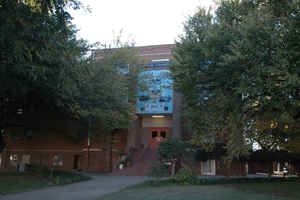Texas Counties
Texas is divided into two hundred and fifty-four counties, more than any other state. Texas was originally divided into municipalities, a unit of local government under Spanish and Mexican rule. When the Republic of Texas gained its independence in 1836, there were 23 municipalities, which became the original Texas counties. Many of these would later be divided into new counties. The most recent county to be created was Kenedy County in 1921. The most recent county to be organized was Loving County in 1931Dawson County, Texas
Dawson County Education, Geography, and History

Etymology - Origin of Dawson County Name
Nicholas Mosby Dawson, a soldier of the Texas Revolution
Demographics:
County QuickFacts: CensusBureau Quick Facts
Dawson County History
A Dawson County was founded in 1856 from Kinney County, Maverick County and Uvalde County, but was divided in 1866 between Kinney County and Uvalde County. The current Dawson County was founded in 1876. It is named for Nicholas Mosby Dawson, a soldier of the Texas Revolution. The seat of the county is Lamesa.
Handbook of Texas Online
The first decade of the twentieth century was a time of dramatic growth for Dawson County, as the population
jumped from thirty-seven people in 1900 to 2,320 in 1910, and the number of ranches and farms increased from four to
330. Between 1902 and 1905, as the grazing leases expired, Dawson County lands were filed on for settlement.
Prospective settlers waited in line in Big Spring for as long as six weeks when choice pieces of land were released.
In 1907 the first railroad land was sold at from three to five dollars an acre. One large ranch was not opened for
settlers until 1946, when it sold for sixty-five dollars an acre. The first school in Dawson County began in one
room of the Mullins ranchhouse in 1902. The first church was organized by the Baptists in Chicago in 1904, but the
Methodists built the first church building in Lamesa in 1907; it was used alternately by four communions on
successive Sundays. The first post office was north of Lamesa at the Bartow ranch headquarters, where residents
produced a wagonload of mail to prove to postal authorities that a post office was needed. They were so impressed by
the amount of their own handiwork that they humorously named their post office Chicago. That same year, the
Dawson County News was begun by J. E. Garrison and the Dawson County Bank was organized. Dawson County, named
for Nicholas Mosby Dawson, had been formed on August 21, 1876, but was attached
to Howard County for judicial purposes until February 13, 1905, when separate organization was authorized. Dawson
County's first election to choose officials and select the county seat was held on March 20, 1905. The contesting
towns, Lamesa and Chicago, were only two miles apart. Lamesa won by five votes, but a movement was already afoot to
consolidate the towns and all businesses and residences in Chicago were moved into Lamesa. After six years of effort
to secure a railroad, the Santa Fe was built into Lamesa in 1911. More at
Leona M. Gelin and Mark Odintz, "DAWSON COUNTY," Handbook of Texas Online (http://www.tshaonline.org/handbook/online/articles/hcd03),
accessed January 23, 2016. Uploaded on June 12, 2010. Published by the Texas State Historical Association.
Defunct Dawson County
DAWSON COUNTY. Another Dawson County, established by the Texas Legislature on February 1, 1858, was named for Nicholas Dawson and included the eastern portion of what is now Kinney County and the western portion of Uvalde County. The act was never expressly repealed, but the territory was obliterated by acts dated September 29 and October 5, 1866. The area included no part of present Dawson County, established in 1876.
BIBLIOGRAPHY: R. L. Batts, "Defunct Counties of Texas," Quarterly of the Texas State Historical Association 1 (October 1897). Hans Peter Nielsen Gammel, comp., Laws of Texas, 1822-1897 (10 vols., Austin: Gammel, 1898).
Geography: Land and Water
As reported by the Census Bureau, the county has a total area of 902 square miles (2,336 km2), virtually all
of which is land.
Neighboring Counties
Bordering counties are as follows:
- Lynn County (north)
- Borden County (east)
- Martin County (south)
- Gaines County (west)
- Terry County (northwest)
Education







